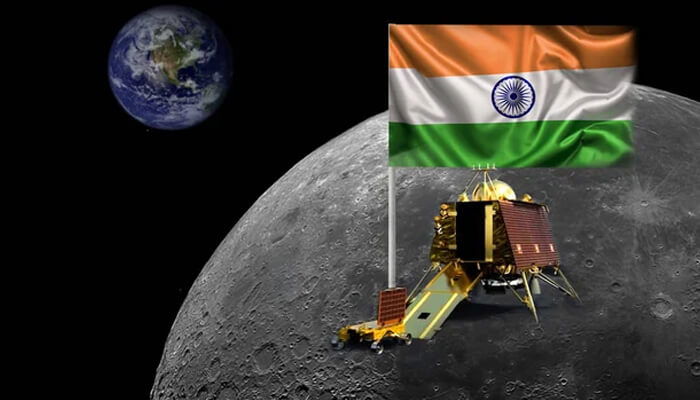The Chandrayaan-3 project is scheduled to conclude today with its widely anticipated lunar landing, marking a significant step forward for India’s space research efforts. This mission demonstrates India’s continuous commitment to expanding its scientific and technological capabilities in the field of space research, building on the accomplishments of its forerunners, Chandrayaan-1 and Chandrayaan-2.
The Indian Space Research Organisation (ISRO), which made this announcement on Sunday, has set the day and time for the Chandrayaan-3 landing for August 23 at 6:04 p.m. You may watch it live on the official ISRO website, its official YouTube channel, its Facebook page, and DD National from 5:27 p.m. on August 23 until Chandrayaan-3 touches down. You can also tune in to Aaj Tak and India Today for the live broadcast. You can also tune in to Aaj Tak and India Today for the live broadcast. Space enthusiasts can also check the live blog on BusinessToday to get the most updated information. In.
The Journey So Far
The Indian Space Research Organisation (ISRO) has spent years planning Chandrayaan-3, their third lunar exploration mission. Chandrayaan-3 aims to accomplish what its predecessor couldn’t—a flawless soft landing—after the remarkable achievements of Chandrayaan-1, which confirmed the presence of water molecules on the Moon’s surface, and Chandrayaan-2, which included an orbiter, lander, and rover (though the lander’s soft landing didn’t go as planned).
Beyond simply setting foot on the Moon’s surface, the mission has further goals. The goal of Chandrayaan-3 is to send out a rover that will carry out experiments, collect data, and send insightful messages back to Earth. These discoveries might help us comprehend the geology, terrain, and possible resources of the Moon better.
Progress in technology
The technological advancements that Chandrayaan-3 makes possible are among its noteworthy features. The mission features upgrades to the landing gear, navigation, and communication systems, all geared toward boosting the possibility of a successful touchdown. The landing plan has been improved as a result of the lessons learned from Chandrayaan-2’s failed landing attempt, increasing the likelihood of accuracy and safety.
Collaboration with other nations
Additionally, Chandrayaan-3 ushers in a period of greater space exploration cooperation. ISRO has garnered knowledge from both its own mistakes as well as from other international space agencies’ lunar expeditions. The hazards and difficulties related to space missions have been reduced as a result of the shared knowledge and skills made possible by this collaborative spirit.
Relevance to Science
The information and discoveries that Chandrayaan-3’s mission could produce are keenly awaited by the scientific world. The discovery of water molecules by earlier missions has prompted inquiries regarding the origin and dispersion of these resources. The rover aboard Chandrayaan-3 may be essential in examining lunar rock and soil samples, providing insight into the Moon’s past and demonstrating the Moon’s viability as a base for future space exploration missions.
Inspiring the Future Generation
The potential of India’s Chandrayaan missions to encourage and inspire the younger generation is one of its most important effects. These missions serve as a testament to the amazing things that hard work, innovation, and science can accomplish. Many young people are likely to be inspired to pursue jobs in science, technology, engineering, and mathematics (STEM) sectors as the globe watches Chandrayaan-3’s landing attempt today.
Conclusion
Chandrayaan-3’s successful lunar landing at the end of its mission would be a huge step forward for India’s space exploration history. It’s critical to recognize the commitment and toil of innumerable scientists, engineers, and researchers who have made this mission possible as we observe this crucial moment. Chandrayaan-3 is a monument to human tenacity, curiosity, and the quest for knowledge regardless of the consequences. It confirms that there are no boundaries; the sky is only the beginning.



